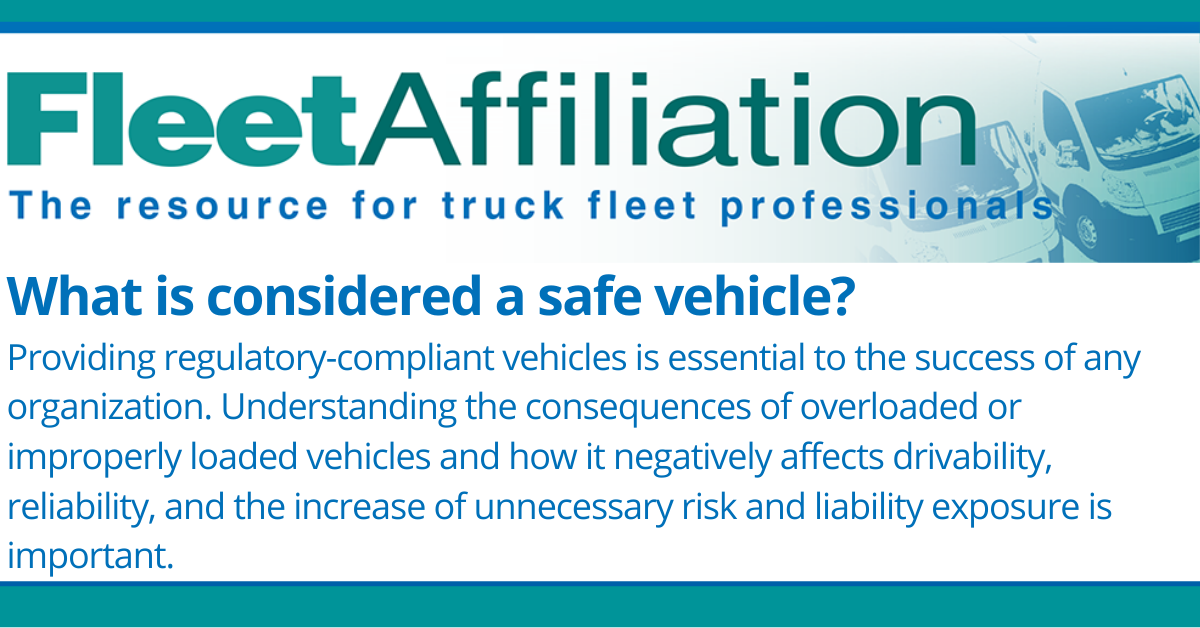
Published in July 2024 Fleet Affiliation
It’s important to mitigate as much organizational risk as possible by providing safe vehicles for your fleet. How does an organization define a safe vehicle? For starters, a safe vehicle is not overloaded, and none of the required safety devices have been removed or disabled. It’s imperative to understand that the meaning of overloaded vehicle goes beyond gross vehicle weight rating (GVWR). The definition can refer to many aspects of the vehicle; individual components have load restrictions. If any individual component rating is exceeded, the vehicle should be considered overloaded. The final-stage manufacturer should ensure that individual components are not overloaded as compared to the GVWR.
Here are some aspects to consider when designing a regulatory-compliant commercial vehicle.
Vehicle weight can be hard to control
Commercial vehicles are often complex and manufactured in multiple stages by numerous manufacturers. Controlling vehicle weight is already a difficult process that can be compounded with challenges as battery electric and alternative fuel components (both on the powertrain and auxiliary components) become more mainstream. Providing regulatory-compliant vehicles is crucial to the success of your organization.
Overloaded or improperly loaded vehicles can negatively impact drivability and reliability, while also exposing your organization to unnecessary risk and liability. These issues can lead to avoidable costs, which can be mitigated through proper vehicle design and education.
While individual state laws vary, overweight tickets are often costly. As a fleet professional, you may not have as much control after the vehicle leaves the yard, but education can be the best tool. Educating operators, as well as upper management, can often be an avenue to have policies in place to reduce these consequences.
Space will get used
Operators will utilize any and all cargo space. An important consideration in your planning is to understand the potential cargo that may be loaded, as there is no guarantee an operator will not overload a vehicle.
Also, commercial vehicles are often designed for multiple purposes. For example, seasonally, a dump truck may haul dramatically different materials that have drastically different weight densities. This may include items such as mulch during the spring, and salt and sand during the winter.
To mitigate these potential pitfalls, educate your operators on the tools and controls they need to properly use the equipment for its intended purpose.
Weight control
There are several opportunities to prevent an overload condition. First, it’s important to understand how your commercial vehicles will be used. There is a potential for disconnect between the design team and the end users. Making field observations and engaging with users can be much more productive than making assumptions or telling end users how to use equipment. In the end, they have a job to get done, and they will find a way to use equipment, whether or not it was designed for the task.
Bottom line meets common sense
Providing regulatory-compliant vehicles is essential to the success of any organization. Understanding the consequences of overloaded or improperly loaded vehicles and how it negatively affects drivability, reliability, and the increase of unnecessary risk and liability exposure is important. There are cost implications that can be avoided through education, as well as proper vehicle design. While some may be considered common sense, it’s important to continually address them. Simple situational awareness of how commercial vehicles are used, and operating environments can be used to instill common sense into common practice. Although fleet professionals cannot eliminate the entirety of potential safety hazards associated with the operation of commercial vehicles, it’s important to identify and mitigate potential hazards and risks through proper vehicle design.
Resources available from NTEA